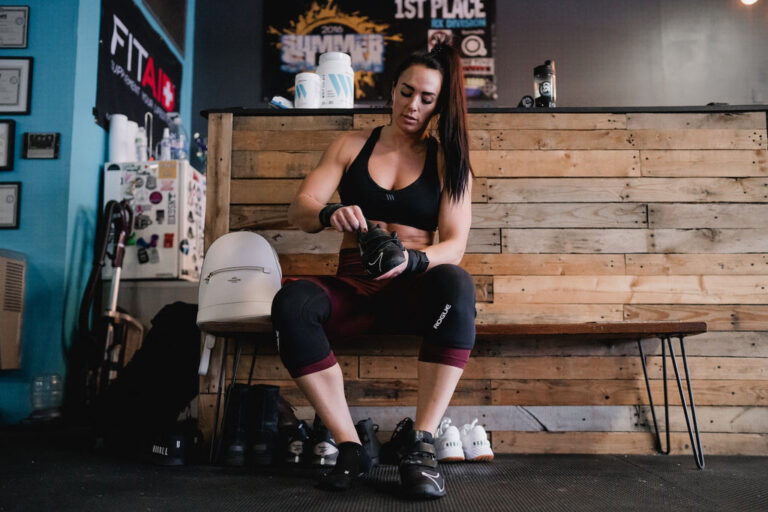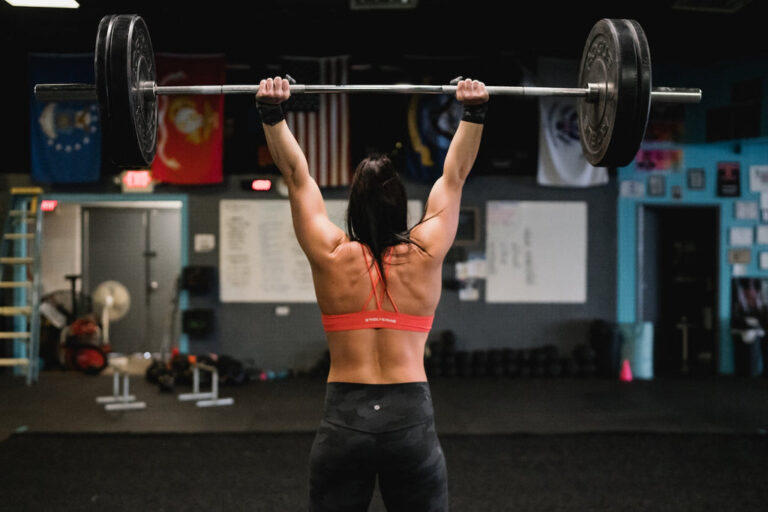
Turkesterone is a naturally occurring ecdysteroid—a type of compound structurally similar to androgens but found in plants and insects. It’s derived primarily from the Ajuga turkestanica plant, native to Central Asia, and has gained traction as a promising alternative to anabolic steroids for building muscle, enhancing performance, and improving recovery—without the risk of hormonal suppression.
Often lumped together with its cousin ecdysterone, turkesterone stands out for its potential ability to stimulate muscle protein synthesis while avoiding the androgen receptor pathway, making it a non-hormonal anabolic. This distinction has made it particularly attractive to bodybuilders, athletes, and natural lifters looking for a legal, side-effect-light edge.
“Turkesterone has recently become a focal point in sports nutrition due to its potential to promote lean muscle growth and physical performance while avoiding the endocrine disruptions often associated with synthetic anabolic agents.”
— Eric Trexler, Stronger By Science
In this guide, we’ll break down how turkesterone works, what the science says about its benefits, how to use it effectively, and how it compares to other muscle-building agents—both natural and synthetic.
What Is Turkesterone?
Turkesterone is a type of phytoecdysteroid—a class of compounds structurally similar to insect molting hormones (ecdysteroids), but naturally found in certain plants. The most prominent natural source is Ajuga turkestanica, a flowering plant native to Uzbekistan and other parts of Central Asia. This compound has been used traditionally in herbal medicine to promote vitality, healing, and physical performance.
Unlike anabolic steroids, turkesterone does not bind to androgen receptors and does not appear to interfere with the hypothalamic-pituitary-gonadal (HPG) axis. This makes it a promising non-hormonal anabolic agent, meaning users may experience muscle growth and performance benefits without the hormonal suppression or post-cycle therapy (PCT) concerns common with synthetic steroids.
It’s often grouped with other ecdysteroids like ecdysterone, but turkesterone may have a more potent profile due to differences in hydroxyl groups and functional orientation that influence its biological activity.
“Ecdysteroids such as turkesterone have been shown in animal models to exhibit anabolic-like effects on muscle tissue without the side effects associated with androgenic compounds.”
— Wilborn et al., Journal of the International Society of Sports Nutrition
As we explore further, we’ll examine how turkesterone works, what benefits it may provide, and how it stacks up against traditional anabolic agents and modern muscle-building supplements.
How Turkesterone Works (Mechanism of Action)
Turkesterone exerts its effects through non-androgenic anabolic pathways, primarily by stimulating muscle protein synthesis. Unlike anabolic steroids, which bind to androgen receptors and may suppress natural testosterone production, turkesterone appears to act through the estrogen receptor beta (ERβ) and the PI3K/Akt/mTOR signaling pathway, which is key in muscle growth and cellular repair.
In vitro studies suggest that turkesterone may increase mRNA expression of IGF-1 (Insulin-like Growth Factor 1) and activate ribosomal biogenesis, contributing to enhanced muscle protein synthesis (MPS) and hypertrophy.
“Turkesterone’s anabolic potential is believed to be mediated by its influence on estrogen receptor beta, which may enhance IGF-1 signaling and activate mTOR—a key pathway for muscle growth.”
— Isenmann et al., Frontiers in Physiology
Additionally, turkesterone does not require PCT and does not appear to affect luteinizing hormone (LH), follicle-stimulating hormone (FSH), or endogenous testosterone production, making it particularly appealing to natural athletes and individuals seeking growth support without hormonal disruption.
Muscle‑Building and Performance Benefits of Turkesterone
While human research is still limited, preliminary studies and animal trials suggest that turkesterone may offer measurable anabolic benefits—especially in terms of lean muscle mass, recovery, and endurance.
🡆 Increased Lean Muscle Mass
In animal studies, turkesterone has been shown to promote significant increases in muscle fiber size and protein content. One study comparing turkesterone to anabolic agents like methandienone (Dianabol) found similar levels of hypertrophy in rats, with fewer side effects.
“Turkesterone-treated animals showed comparable anabolic responses to those treated with synthetic anabolic steroids, suggesting potent protein-synthesis stimulation.”
— Syrov et al., Pharmaceutical Chemistry Journal
🡆 Improved Recovery and Physical Output
Due to its effects on nitrogen retention and mitochondrial health, turkesterone may also accelerate muscle repair and reduce post-workout soreness. Athletes often report better workout tolerance and quicker bounce-back between training sessions.
“Ecdysteroids like turkesterone have demonstrated increased ATP production and enhanced oxidative metabolism in muscle tissue, potentially leading to improved endurance.”
— Gorelick-Feldman et al., Journal of Steroid Biochemistry
🡆 No Hormonal Suppression
Perhaps the most unique benefit: turkesterone does not suppress testosterone, estrogen, or other sex hormones. It’s not classified as a steroid, so users do not require a post-cycle therapy (PCT), and there’s no rebound crash.
“Turkesterone and related ecdysteroids are structurally dissimilar to androgens and do not interact with the androgen receptor, avoiding the endocrine side effects common with synthetic anabolic agents.”
— Wilborn et al., Journal of the International Society of Sports Nutrition
Turkesterone vs Ecdysterone: Key Differences
Turkesterone and ecdysterone are both ecdysteroids, but their structural and functional properties differ enough to potentially influence results. Understanding how they compare is essential for choosing the right supplement.
🡆 Chemical Structure
-
Turkesterone contains additional hydroxyl groups compared to ecdysterone, which may improve its bioactivity and membrane permeability.
-
These structural differences could also impact how each compound interacts with molecular targets like the estrogen receptor beta or PI3K/Akt/mTOR pathway.
“Turkesterone’s unique hydroxylation pattern may enhance its anabolic action relative to ecdysterone, although more comparative human data is needed.”
— König et al., Archives of Toxicology
🡆 Anabolic Effects
Both compounds stimulate muscle protein synthesis, but anecdotal reports often attribute more noticeable strength gains and recovery benefits to turkesterone. Ecdysterone, on the other hand, has a broader base of human trials behind it—most notably a 2019 German study demonstrating muscle growth over 10 weeks.
“Ecdysterone supplementation was associated with significant increases in muscle mass and strength without androgenic effects.”
— Isenmann et al., Frontiers in Physiology
🡆 Availability and Use
-
Ecdysterone is more commonly found in clinical-grade supplements and often third-party tested.
-
Turkesterone is newer to market, sometimes less standardized, but marketed as a stronger anabolic alternative.
Side Effects and Safety of Turkesterone
One of turkesterone’s biggest selling points is its reputation as a side effect-free anabolic alternative—especially compared to traditional anabolic-androgenic steroids (AAS). While human clinical data remains limited, most users and early research indicate a favorable safety profile when used responsibly.
🡆 No Hormonal Suppression
Turkesterone does not appear to bind to androgen receptors, nor does it negatively impact testosterone, estrogen, LH, or FSH levels in humans. This means it does not suppress the hypothalamic-pituitary-gonadal (HPG) axis, and no post-cycle therapy (PCT) is needed after use.
“Unlike anabolic steroids, turkesterone does not interact with androgen receptors or inhibit natural hormone production, making it a viable non-hormonal alternative.”
— Wilborn et al., Journal of the International Society of Sports Nutrition
🡆 Mild Gastrointestinal or Headache Issues (Rare)
Some anecdotal reports describe minor side effects such as:
These are generally dose-dependent and resolve quickly once the dose is adjusted or timing is changed.
“Reported adverse effects from ecdysteroids are rare and often limited to mild gastrointestinal discomfort, especially at high doses.”
— König et al., Archives of Toxicology
🡆 Unknown Long-Term Effects
Because long-term human studies on turkesterone are not yet available, it’s wise to cycle use and avoid chronic year-round intake. Users with pre-existing medical conditions or who take other medications should always consult a healthcare professional before starting.
Turkesterone in Supplement Form
Turkesterone is widely available as a dietary supplement marketed toward athletes and bodybuilders. However, the form and quality of these supplements can significantly impact their effectiveness. Here’s what you need to know:
→ Common Forms of Turkesterone
-
Capsules → The most popular form, typically standardized to 10% turkesterone. Easy to dose and stack.
-
Powders → Less common, but available for those who prefer flexible dosing. May taste bitter and require precise measurement.
-
Whole-plant extracts → Derived from Ajuga turkestanica, but these may contain lower concentrations of active compounds unless standardized.
“Most commercial turkesterone supplements are derived from Ajuga turkestanica, a plant traditionally used in Eastern medicine for its regenerative properties.”
— Gorelick-Feldman, Journal of Steroid Biochemistry and Molecular Biology
→ Bioavailability and Absorption
Turkesterone suffers from low oral bioavailability, meaning only a portion of the ingested dose is effectively absorbed. To address this, some advanced formulas include:
These strategies aim to enhance absorption and improve efficacy.
“Ecdysteroids have poor oral bioavailability due to their polar structure, but delivery mechanisms such as micelles and liposomes can improve uptake.”
— König, Archives of Toxicology
→ Quality Markers to Look For
With the rise of turkesterone supplements, not all products meet the same standards. Prioritize formulas that offer:
-
Third-party testing results
-
Standardized extract levels (e.g., 10% turkesterone)
-
Transparent labeling with no proprietary blends
How to Use Turkesterone (Dosage & Protocol)
While human research is still emerging, anecdotal reports and animal studies suggest effective dosing strategies and stacking protocols for maximizing the anabolic potential of turkesterone.
→ Typical Dosage Protocols
Most supplement companies recommend 30–200 mg per day, standardized to 10% turkesterone. In clinical settings and gym trials, this has been the typical range:
-
Beginners → 250–500 mg/day of Ajuga turkestanica extract (providing ~25–50 mg of turkesterone)
-
Advanced users → Up to 1,000 mg/day, split into morning and evening doses
Turkesterone does not require PCT since it doesn’t suppress testosterone production.
“Ecdysteroids such as turkesterone promote protein synthesis through a non-hormonal pathway, and appear to lack androgenic side effects.”
— Isenmann, Frontiers in Sports and Active Living
→ Best Timing and Cycling Strategies
-
With food → Taken with meals may improve absorption due to fat-soluble components
-
Cycle length → 6–12 weeks is common, with 2–4 weeks off to assess progress
No data currently suggests receptor downregulation, but cycling is still advised for safety and long-term effectiveness.
→ Stacking Recommendations
Turkesterone pairs well with other non-hormonal performance enhancers, such as:
-
L-Glutamine → For recovery and gut health
-
DHEA → Supports hormone balance in older athletes
-
Kre-Alkalyn® Creatine → A pH-buffered form of creatine with no bloating or cycling required
-
Creatine Monohydrate → Clinically proven for strength, size, and power output
-
BPC-157 or TB‑500 → Stack for soft tissue repair and joint protection
“Stacking anabolic and regenerative peptides or natural agents may yield better hypertrophy and recovery without HPTA disruption.”
— Parr, Biology of Sport
Legal Status and Disclaimer
As of 2025, turkesterone is legal to purchase and use as a dietary supplement in the United States and most other countries. It is not classified as a controlled substance and is not currently listed on the World Anti-Doping Agency (WADA) prohibited list. However, regulations can evolve, and athletes competing in tested federations should consult their organization’s rules and the most recent WADA updates.
“Turkesterone and other ecdysteroids are not currently prohibited by WADA, though their performance-enhancing potential is being monitored.”
— Parr et al., Biology of Sport
Disclaimer: The content in this article is for informational and educational purposes only. It is not intended as medical advice or to replace the guidance of a licensed healthcare professional. Always consult a qualified physician or sports medicine expert before starting any supplement protocol, especially those intended for enhanced performance or muscle growth.
Conclusion: Is Turkesterone Worth It for Natural Gains?
The research surrounding turkesterone is still evolving, but the early results and anecdotal evidence suggest it may be one of the most promising natural muscle-building agents on the market. With non-hormonal anabolic effects, it offers an appealing option for athletes who want to avoid the side effects of anabolic steroids or SARMs.
Key takeaways:
→ Turkesterone stimulates protein synthesis via a non-androgenic pathway
→ It doesn’t appear to suppress natural testosterone or require PCT
→ Most users tolerate it well and report enhanced strength, recovery, and lean mass gains
→ Quality, bioavailability, and dosing are critical for results
For athletes focused on natural growth, enhanced recovery, and minimal risk, turkesterone could be a valuable part of your stack. However, as with all supplements, consult a healthcare professional before beginning a new regimen—especially if stacking with other performance-enhancing compounds.






